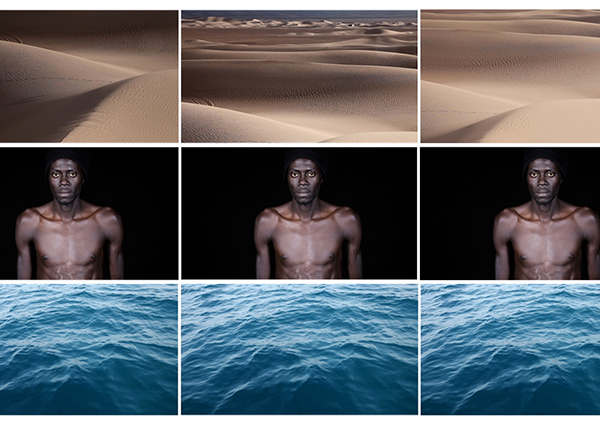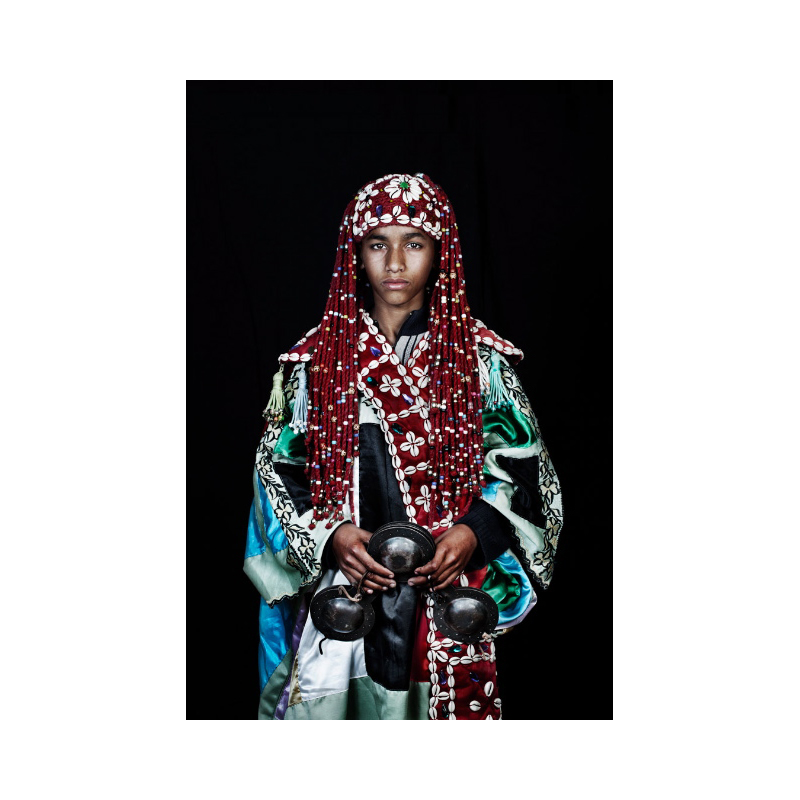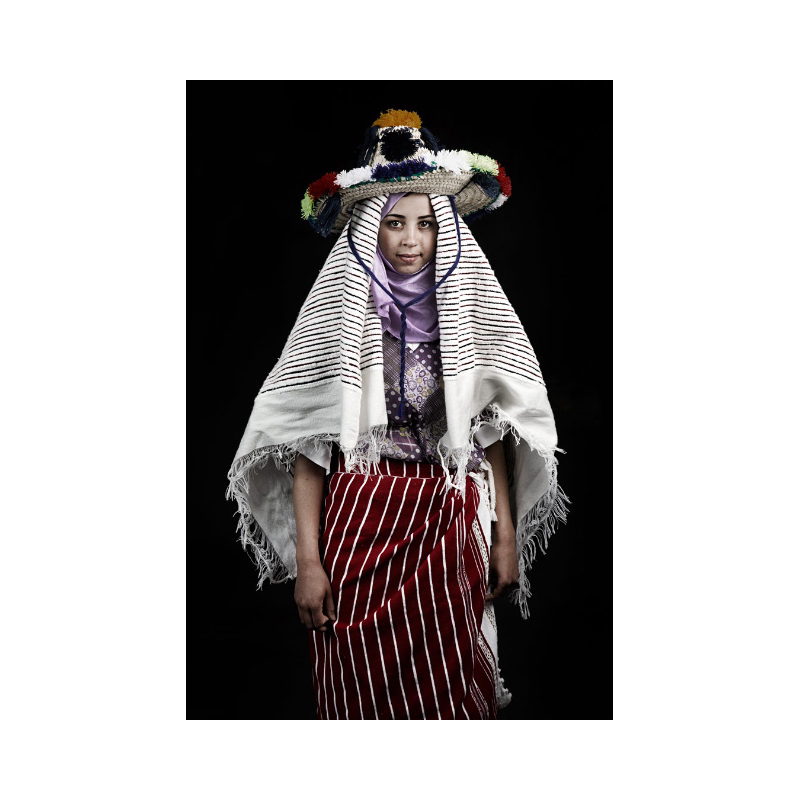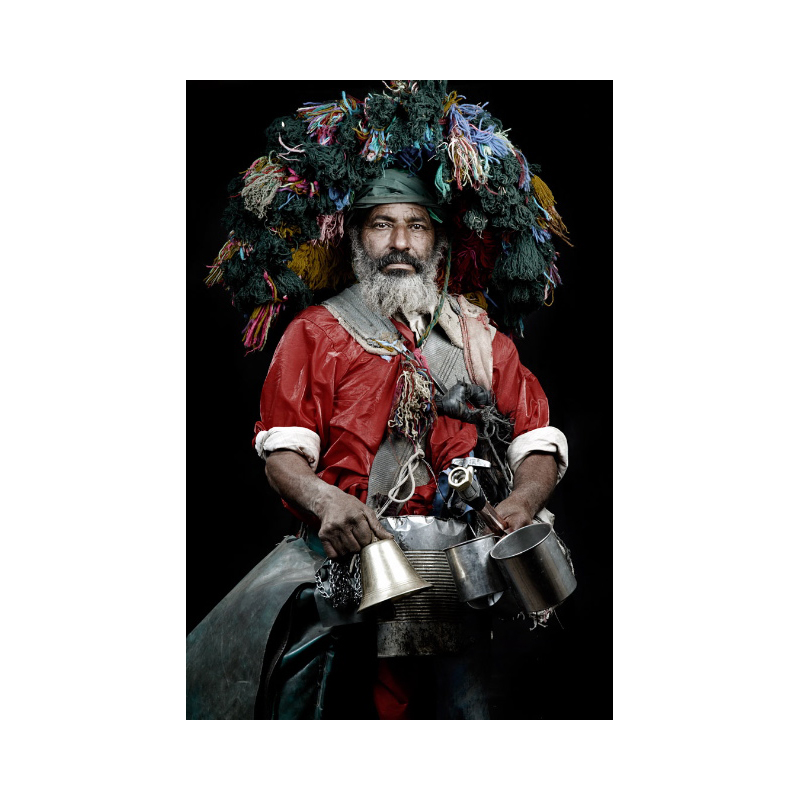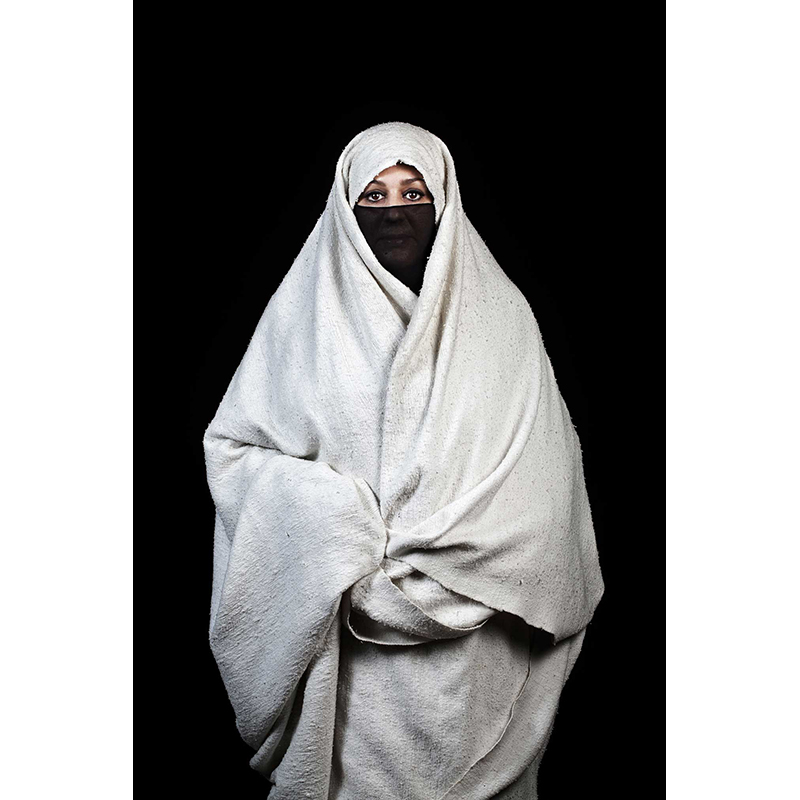On January 18, artist Leila Alaoui died from injuries sustained in a terrorist attack in Ouagadougou, Burkina Faso. A 33-year-old French-Moroccan photographer, Alaoui had already achieved international acclaim well beyond her years, with a solo exhibition at the Maison Européenne de la Photographie in Paris that closed last month, as well as work included in shows at MUNTREF Centro de Arte Contemporáneo-Buenos Aires, the Institut du Monde Arabe in Paris, the Marrakesh Biennial in Morocco, and Art Dubai. Through her work—striking photographs that capture the complexity and depth of her subjects in a way that is at once majestic and haunting—Alaoui examined pressing modern-day issues, from immigration to cultural displacement. Alaoui’s friend and fellow artist, Shirin Neshat, reflects on her life and work.
I met Leila Alaoui in the spring of 2003, when my team and I went to Marrakech to shoot Mahdokht, a video installation named after a character from the magic realist novella, Women Without Men. The video required casting more than 20 children. The video required casting more than 20 children. Leila, only 21 years old, took charge of controlling and helping the children, most of whom were under seven. During waiting periods, Leila spoke to them in their native language while they played games and she told stories. The children quickly feel in love with her. She was a naturally caring and compassionate person, who thrived on working with a team.
Leila always showed up on the set with a camera, shooting portraits of the children and the behind-the-scenes happenings. She often shared her photographs with me, and talked about her aspirations of becoming a professional artist one day.
A few years later, I met Leila again in New York while she was finishing her studies at the City University of New York City. By total coincidence, her sister, Yasmine moved next door to me in Soho. But by 2008 Leila disappeared from New York.
Through social media, I learned Leila had not only evolved into an active visual artist, she’d become the artistic director of a cultural space she co-founded in Beirut called the “Station”; been traveling around the world, taking journalistic photographs for publications including the New York Times; had shot images for various human rights campaigns and made a video installation titled Crossings, describing the journeys of sub-Saharan Africans traveling to Europe; and completed a photographic assignment, “Everyday Heroes of Syria,” focusing on the refugee settlements in Lebanon, Jordan, and Iraq.
In 2014, I visited Leila’s parents in their beautiful home in Marrakech. Her mother showed me Leila’s most recent portraits, which were hung on their walls. I was stunned by the maturity and complexity of those photographs. Leila’s mother explained that Leila now lived in Beirut, enjoying a lively artistic life.
“The Moroccans” are some of the most powerful portraits ever taken by Leila and perhaps the most outstanding images ever produced about Morocco.
In December of 2015, I saw Leila’s latest body of work, an arresting series of images called “The Moroccans,” which were exhibited at La Maison Européene de la Photographie, as part of the Biennial of Contemporary Arab World Photography, in Paris.
“The Moroccans” are some of the most powerful portraits ever taken by Leila and perhaps the most outstanding images ever produced about Morocco. The grace, beauty, and humanity of these captivating faces penetrate deep into one’s soul, without any exoticism or sentimentality.
In 2016, Leila’s final commission, a photography project for Amnesty International on a women’s rights campaign called, “My Body My Rights” took her to Ouagadougou, Burkina Faso, Africa.
When the news came that Leila had been hurt while working in Africa in a violent attack by Al Qaeda, I gasped in pain but was relieved to know that she had survived. Two days later, she was reported dead.
There are no words that I can use to describe the depth of my sorrow for the sudden and tragic loss of Leila. In my lifetime, I’ve experienced the deaths of many loved ones, but few have hit me so hard. It’s impossible to justify the pointlessness of the death such a brilliant young woman.
They will both certainly remain in my heart and psyche forever, as they have shown me the full potential of being one with one’s art.
Leila contributed, in such a short time, so much to the world, through her art and activism. I can’t help but find a parallel between Leila’s trajectory and that of the iconic Iranian poet Forough Farrokhzad (1935-1967), who died at the age of 32 in a tragic car accident. The legendary Forough remains one of the most prolific and significant modern poets in Iranian history, despite her short life.
Leila and Forough worked hard and fast and left tremendous legacies. They have shown me the full potential of being one with one’s art.
Shirin Neshat is an Iranian-born artist and filmmaker living in New York.
To contact Guernica or Shirin Neshat, please write here.
